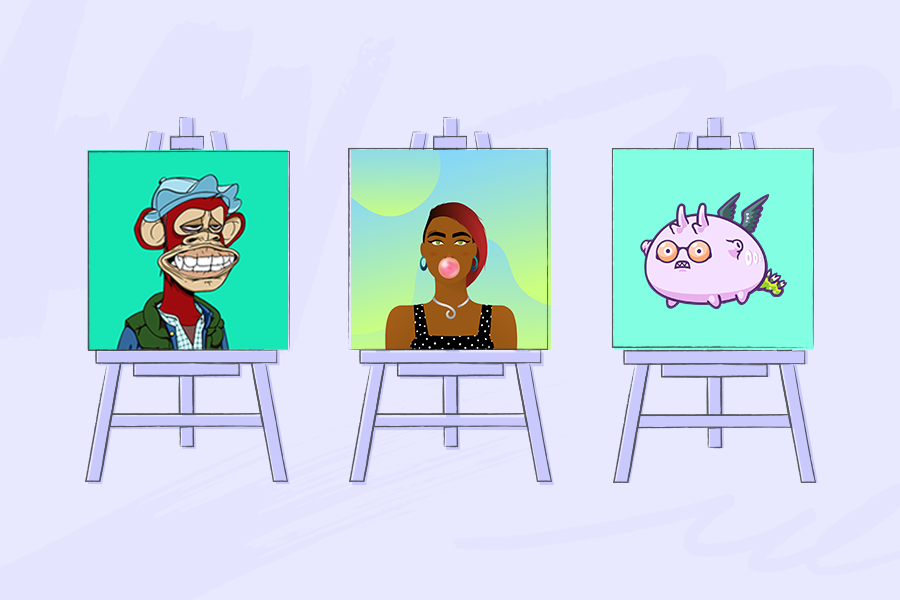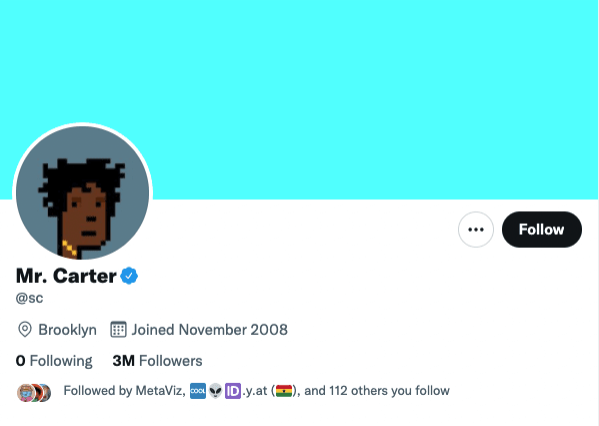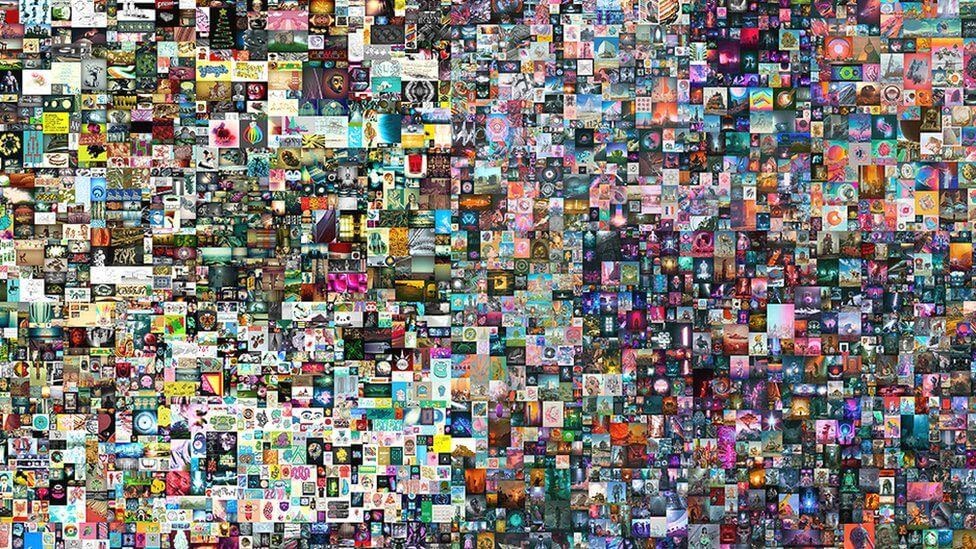Published 8th September 2021
How to Create and Mint Your Own NFT - The Complete Guide

We've all heard of NFTs but how on earth do you actually make one? This guide will set you on your way to creating the next Bored Ape Yacht Club!
What is an NFT?
NFT stands for Non-Fungible Token. The term seems inescapable at the moment, with everyone getting involved, from NBA star Steph Curry who purchased a virtual Ape from the Bored Ape Yacht Club collection for $180,000. To the artist Grimes selling a short video for nearly $400,000.
.@StephenCurry30 just casually chillin in the bored ape discord ??? pic.twitter.com/sREO3RIq2N
— Storm? (@CryptoStorm__) August 28, 2021
An NFT is a piece of data stored on the blockchain that guarantees something is unique and irreplaceable. Think of it as a digital signature. You could print off an image of the Mona Lisa from Google, but it won’t be the same as the one hanging in The Louvre signed by Leonardo da Vinci.
What can be turned into an NFT?
Pretty much anything you can think of can be certified as an NFT! It is most famous for representing collectable cards, pictures, GIFs and videos. But an NFT could also be real estate, a tweet and one Polish Instagrammer even sold her love in the form of an NFT.

Why should you make an NFT?
There’s a range of reasons why you should look at creating your own NFT or even an entire NFT collection.
Make money off your art or digital assets
Creators are interested in making their own NFTs for several reasons. The most obvious reason is to make money. Two friends in Miami created a line of 10,000 unique variations of an image of a cartoon ape and were able to sell them all for $200 each. This is how Bored Ape Yacht Club was formed.
The creators get a portion of the sale price every time these apes change hands. Considering the floor price now is around 40 ETH (around $137,000), it’s no wonder everyone wants to get involved.

Create scarcity for your creative work
Previously, artists had very few ways to prove the authenticity and scarcity of their digital artwork. Anyone could simply copy and paste a piece of art, with no way of proving if the art was genuine or a copy.
However, through the use of NFTs, we can use the Blockchain ledger to prove the authenticity and the scarcity of creative work. The ledger stores a unique key for each piece of art and stores information about the total amount of NFTs that have been minted.
Open your artwork to a wider audience
Another huge advantage of minting your artwork as an NFT is the new market it opens up.
The NFT space has completely blown up over the last few years. This has led to thousands of users gaining exposure to the digital art/collectables space.
Combine this with the fact that huge names such as Paris Hilton are going on TV and chatting about NFTs, and you’ve got a booming new way to monetize and distribute your work.
But you don’t have to be famous to create your own NFT. Here are the five steps to creating your very own NFT!
Step 1: Decide what form your NFT is going to be
Decide what form of NFT you are going to create. The most established form is a piece of artwork as a picture, video or GIF.
There are very few limits to what you could make into an NFT with the rise of tokenisation, you could even sell your house!
To keep things simple in this article we’ll focus on selling a piece of fine art we’ve drawn ?

Step 2: Choose your NFT marketplace
There is a range of NFT marketplaces that will allow you to mint and sell your NFTs. Some of the biggest examples include KnownOrigin, OpenSea and Rarible.
KnownOrigin
KnownOrigin is a digital art marketplace based on the Ethereum blockchain. Their marketplace is similar to an art gallery with pieces from huge artists such as Trevor Jones and Brendan Dawes. The platform allows artists to list their art for free and takes a small royalties fee on every sale.
The platform has both a Primary Marketplace (where users buy directly from the artist) and a Secondary Marketplace (where users buy from other collectors who are re-selling art). The KnownOrigin team have set the platform up so that when a piece of art is resold on the platform the artist will always receive royalties for their original work.
One thing to consider with KnownOrigin is that you have to apply to be able to mint art on the platform. This ensures that the platform is filled with high-quality and authentic digital art.
OpenSea
OpenSea is a cross-chain NFT marketplace that uses the Ethereum, Polygon and Klaytn blockchains. It’s, without doubt, the biggest NFT Marketplace currently on the market with sales on the platform up by over 12,000% this year.
It hosts a wide range of NFTs from virtual cats, apes, dogs to fine art worth millions.
With the OpenSea platform you have the options to sell your NFT via a fixed price, an English auction (the highest bid wins), or a Dutch auction (the price falls until it’s matched.)
Buyers pay the gas fees when purchasing fixed-price items. Sellers pay the gas when accepting offers. But all first-time sellers have to pay a one-time fee of two transaction costs.
Rarible
Rarible is a community-owned NFT marketplace. Similarly to OpenSea, the platform is an all-rounder and showcases a range of popular NFT projects for users to collect, buy and sell.
What differentiates them from other platforms is their governance token named $RARI. The Rarible team have issued about 40,000 of these a week which are split 50/50 between buyers and sellers on the platform.
The governance token provides you with the opportunity to influence decisions on the Rarible platform.

Step 3: Decide how rare you will make your NFT (Scarcity)
When deciding on the rarity of your NFT, you need to consider whether you want to create a one-off piece of art or multiple NFTs as a set of collectables. Both have their benefits and negatives, and both can end up being insanely valuable.
For example, there are 10,000 CryptoPunks available, but all are unique. They create a members-only feel for people who purchase them. They have managed to keep their exclusivity through their high prices and some big names backing the project. For example, Jay Z setting one as his Twitter profile picture.

Even with 10,000 CryptoPunks available, the most valuable sale on OpenSea is 4,200 ETH which is equal to over $14.5 million.
However, the most expensive NFT of all time is a one-of-one piece of digital art created by the NFT artist Beeple. The NFT is named “The First 50,000 Hours” and sold for nearly $70 million at Christie’s auction house.

Step 4: What Blockchain will you use to mint your NFT?
Up until the last 12 months or so the only option when it came to minting NFTs was Ethereum.
Ethereum is the most widely adopted blockchain when it comes to launching NFT projects. The blockchain is also supported by the large majority of marketplaces.
However, the large downside of using Ethereum for your NFT collection is the potential for huge transaction fees. When Gas fees are high, it can cost users hundreds or even thousands to mint a popular NFT, often to the point where the Gas used for the transaction is more than the price of the NFT.
There are other Blockchains that have NFT capabilities such as Cardano, Solana, Polygon, etc. These don’t include gas prices and only charge a small transaction fee. However, there is a slight trade-off as these Blockchains are often not compatible with as many marketplaces and are less well known to users.
Step 5: Create your Collection and Mint your NFT!
In this guide, we’re going to show you how to create an NFT collection on OpenSea. If you’d like to create a single NFT then you can go directly to the “Create” option in OpenSea.
To begin with, you need to visit OpenSea and connect your crypto wallet. Under the “My Profile” section, represented by your profile icon, select the section called my collections.

Once you are in you can select create a new NFT collection. You can give your collection a name, logo, banner and description. Examples of famous collections include BAYC and CryptoPunks.
We’re going to create our own collection of NFTs called Wild Flowers.
At this stage, there is also an option to add links to your social media accounts and website. The more information you can add to your listing the better understanding collectors can get about your project and any community surrounding it.
When you create your collection, you can also select which cryptocurrency you would like users to be able to pay in as well as ETH. Click “Create” and you’ve now got your first collection (this will house our NFTs).
The final stage in the process is to add the actual NFTs to the collection.
To do this visit your collection click “Add Item”.

On the mint page, there are some really important details that we don’t want to miss. Using OpenSea you can add extra data to your NFTs with specific traits that they contain. This allows your community to compare different NFTs in your collection and distinguish rarity.
Once you’ve filled out all the details click Create, pay the transaction fee using your digital wallet.
That’s it! You’ve created your first NFT on the Blockchain!
Feel free feel to take a look at our NFT Wild Flower collection OpenSea.
Roundup
We’ve hoped this article has shown you how easy it really is to mint an NFT of your own.
Have a go at creating your own NFT, and let us know on Twitter how you found the process.

